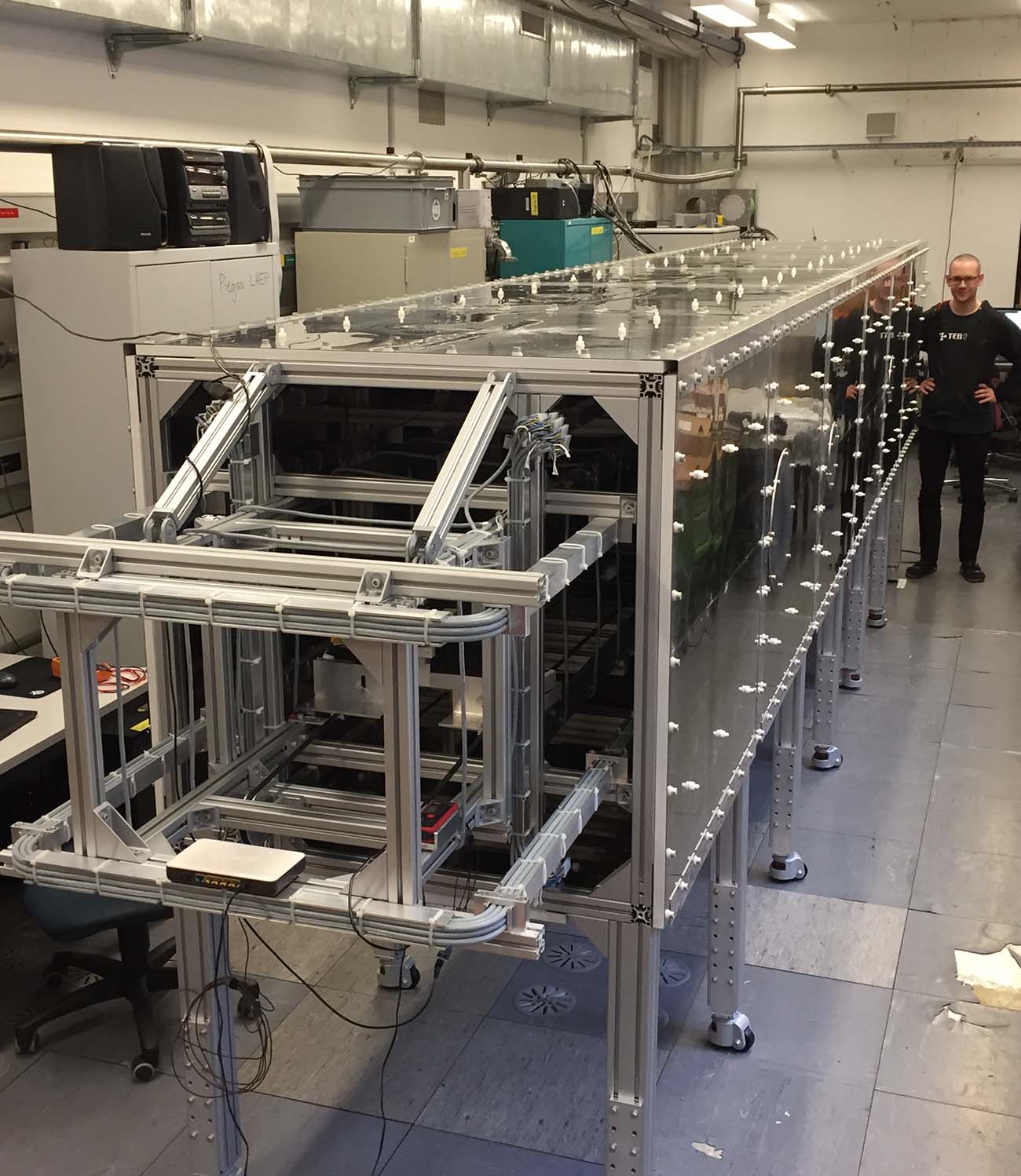Matter
On the trail of dark matter
With the help of a precision experiment developed at the University of Bern, an international research team was able to significantly limit the scope for the existence of dark matter. The experiment was carried out at the European Research Neutron Source at the Laue-Langevin Institute in France and makes an important contribution to the search for these particles, of which little remains known.
A promising category of candidates for dark matter particles are certain hypothetical elementary particles, known as axions. An important advantage of these extremely lightweight particles is that they could simultaneously explain other important phenomena in particle physics which have not yet been understood.
Thanks to many years of expertise, a team led by Ivo Schulthess and Florian Piegsa from the Laboratory for High-Energy Physics (LHEP) and the Albert Einstein Center for Fundamental Physics (AEC) at the University of Bern succeeded in designing and building an extremely sensitive measuring apparatus – the Beam EDM experiment. If the elusive axions actually exist, they should leave behind a characteristic signature in the Bernese measuring apparatus.
The experiment is used to determine the rotational frequency of neutron spins, which move through a superposition of electric and magnetic fields. The spin of each individual neutron acts as a kind of compass needle, which rotates like the second hand of a wristwatch due to the magnetic field – but nearly 400,000 times faster. This rotational frequency was measured constantly and precisely and examined for the smallest periodic fluctuations which would be caused by the interaction with the axions. The results of the experiment were clear: The rotational frequency of the neutrons remained unchanged, which means that there is no evidence of axions in our measurement.
These measurements, which were carried out together with researchers from France at the European Research Neutron Source at the Institute Laue-Langevin, allowed for the experimental exclusion of a previously completely unexplored parameter space of axions. It also proved possible to search for hypothetical axions which would be more than 1,000 times heavier than was previously possible with other experiments.
Learn more
Albert Einstein Center for Fundamental Physics (AEC)
The Albert Einstein Center for Fundamental Physics (AEC) was founded in 2011. Its aim is to foster high-level research and teaching in fundamental physics at the University of Bern. The main focus is on experimental and theoretical particle physics and its applications (e.g. medical physics), as well as on the related spinoff and outreach activities.
The AEC was founded with the cooperation of the Institute for Theoretical Physics (ITP) and the Laboratory for High-Energy Physics (LHEP) of the University of Bern. With its over 100 members, the AEC is one of the largest university groups of researchers working in the field of particle physics in Switzerland, and a strong player at an international level.
